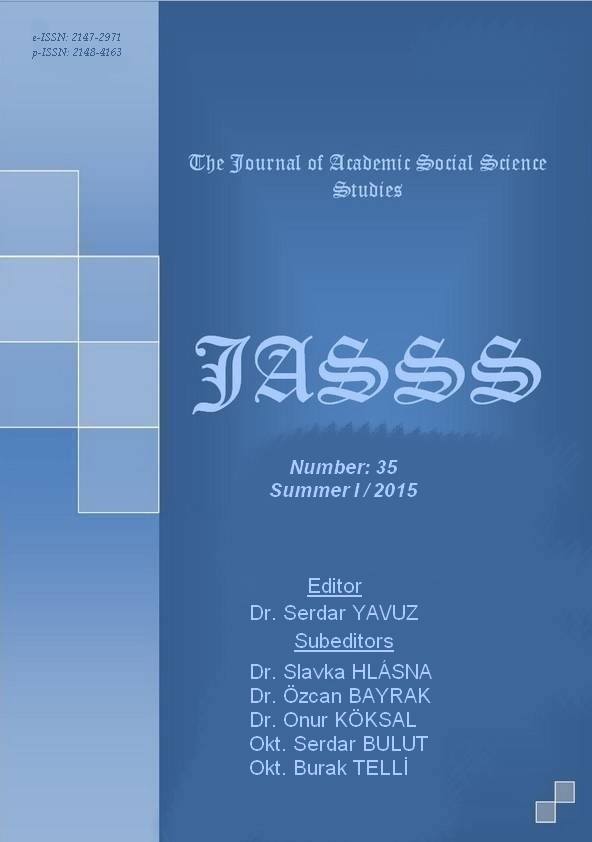Author :
Abstract
Zihinsel iş yükü; hesaplama, karar verme, iletişim kurma, hatırlama, araştırma, arama gibi zihinsel ve algısal aktivitelerin oluşturduğu iş yüküdür. Yapılan bu çalışma ile GATF Eğitim Hastanesinde görevli hekimlerin zihinsel iş yüklerinin değerlendirilmesi ve zihinsel iş yükünün hekimlerin sosyo-kültürel özelliklerine göre farklılık gösterip göstermediğinin belirlenmesi amaçlanmıştır. Çalışmada, Hart ve Staveland tarafından geliştirilen “NASA-TLX Ölçeği” kullanılmıştır. Araştırmaya % 48.3’ü öğretim üyesi olmak üzere toplam 178 hekim katılmıştır. Araştırma sonucunda, hekimlerde en yüksek düzeyde zihinsel iş yükü oluşturan faktörün “zaman darlığı baskısı”, en alt düzeyde zihinsel iş yükü oluşturan faktörün ise “fiziksel zorlanma” olduğu görülmüştür. Hekimlerin zihinsel iş yükü puan ortalaması 65.42±15.2’dir. Zihinsel iş yükünün; % 17.7’si poliklinik hizmetleri, % 29.9’u klinik hizmetleri, % 16.5’i idari ve yönetimsel faaliyetler, % 19.3’ü eğitim-öğretim faaliyetleri ve % 16.5’i ise araştırma-geliştirme ve bilimsel faaliyetlerden kaynaklanmaktadır. Hekimlerin zihinsel iş yükü yaş, meslekteki toplam çalışma süresi, çalışılan bölüm, nöbet sayısı ve meslekten genel memnuniyet durumu değişkenlerine göre farklılık gösterirken; cinsiyet, medeni durum, unvan, çocuk sayısı ve GATF Eğitim Hastanesindeki toplam çalışma süresi değişkenlerine göre farklılık göstermediği görülmüştür. Yöneticiler veya karar vericiler tarafından yapılacak görev dağılımlarında hekimlerin sosyo-kültürel özelliklerinin dikkate alınmasının uygun olacağı değerlendirilmiştir.
Keywords
Abstract
Mental workload is the workload that is constituted by mental and perceptive activities such as calculation, decision making, communicating, remembering, searching and seeking. With this current study, main objective has been to evaluate mental workloads of doctors who work in GATF (Gulhane Military Medical Faculty) Training Hospital and to determine whether there is a difference on mental workloads of physicians depending on their socio-cultural backgrounds or not. The “NASA-TLX Scale”, which was developed by Hart and Staveland has been used in this study. 178 physicians, 48.3% of whom were faculty instructors, attended the research. In the conclusion of the study, the highest level mental workload factor was “pressure of short deadlines” and the lowest level mental workload factor was “physical strain”. Physicians’ mental workload average is 65.42±15.2. Mental workload consists of 17.7% polyclinic services, 29.9% clinic services, 16.5% administrative and managerial activities, 19.3% education-training activities and 16.5% research-development and scientific activities. While physicians’ mental workload differed (significantly) depending on the variables of age, total time spent on service, department where they work, number of duties and general satisfaction from their jobs, their mental workload did not differ depending on the variables of sex, marital status, title, the number of children and total amount of service time in GATF Training Hospital. It has been found significant that administrators and decision-makers should consider doctors’ socio-cultural traits during the distribution of duties.





